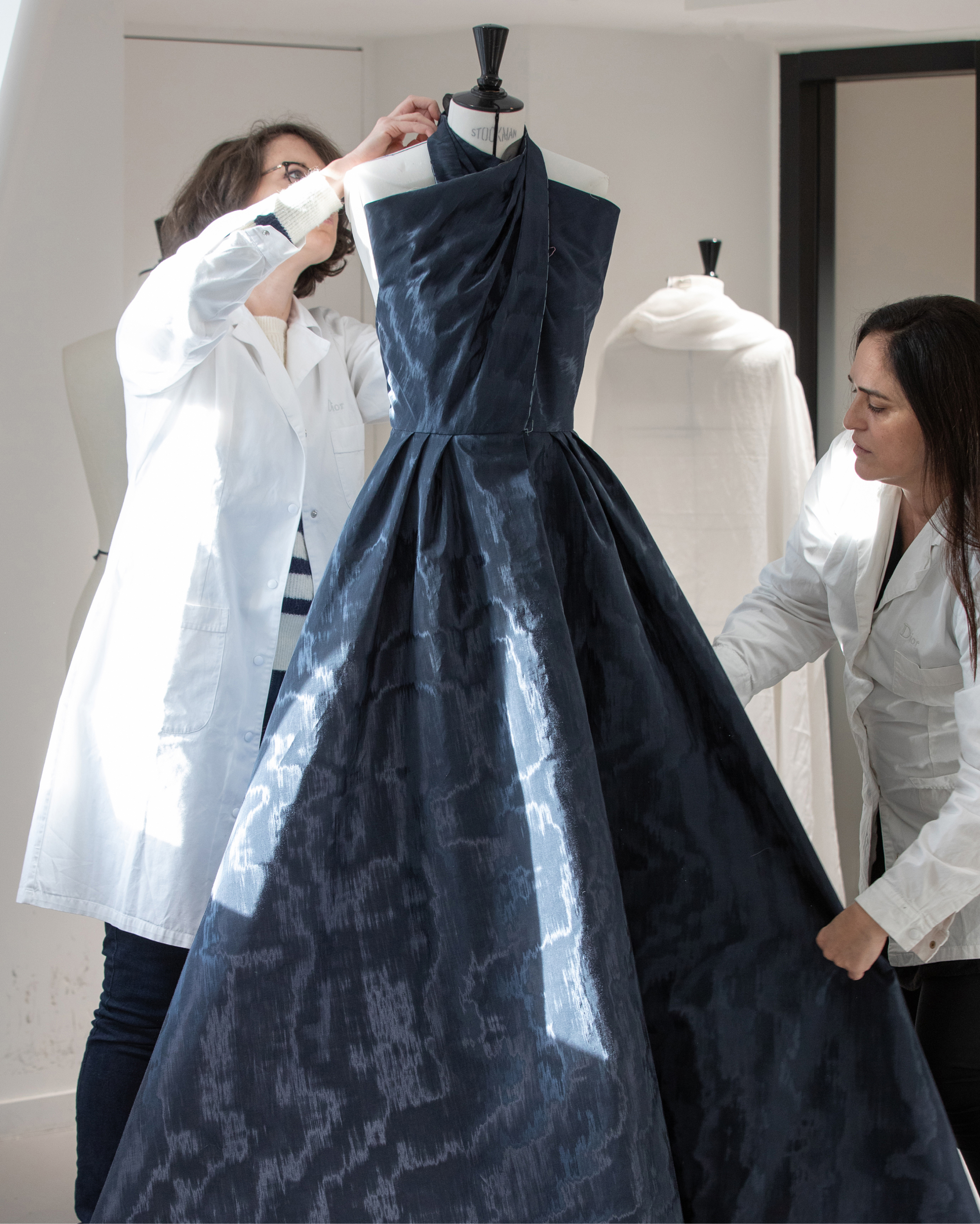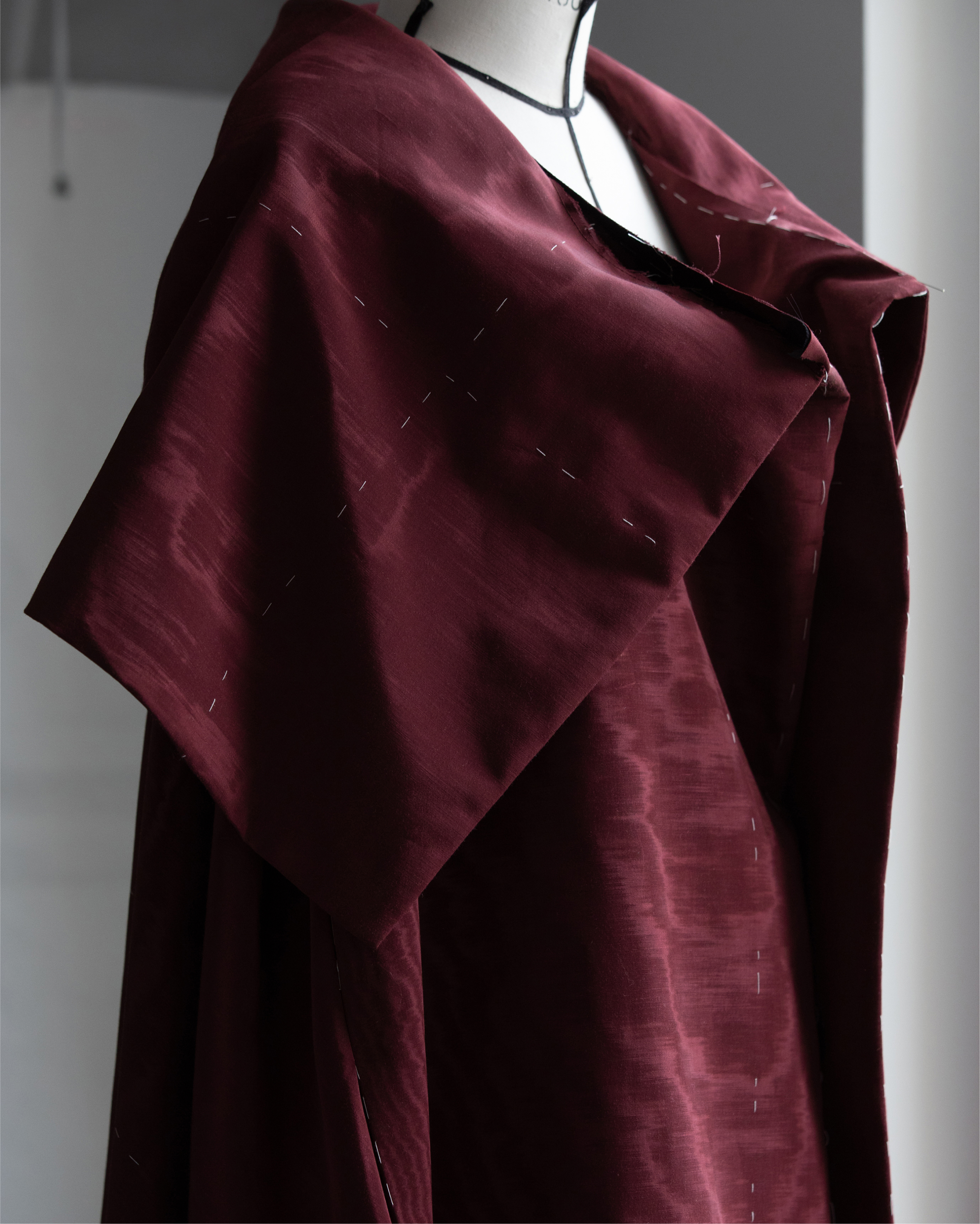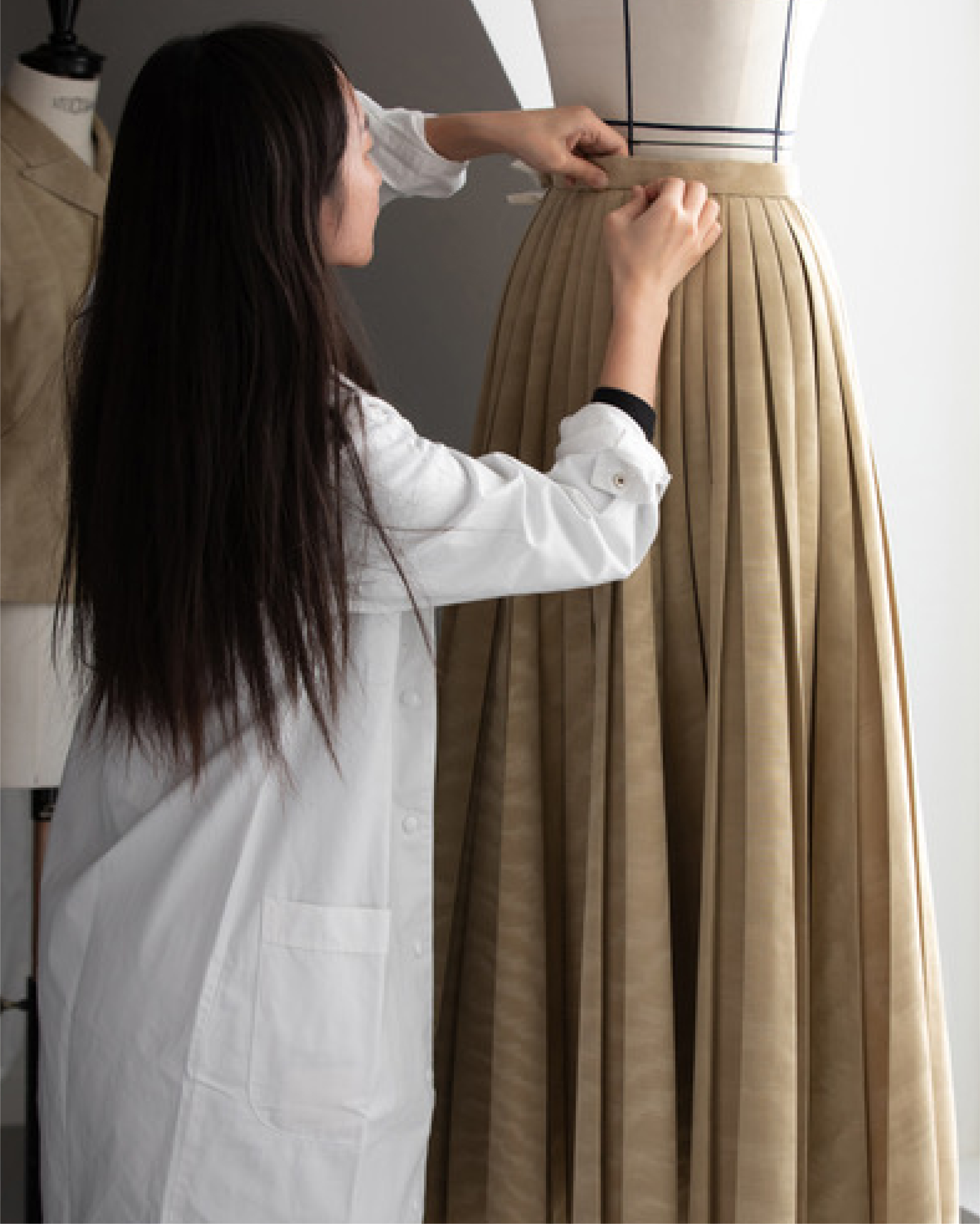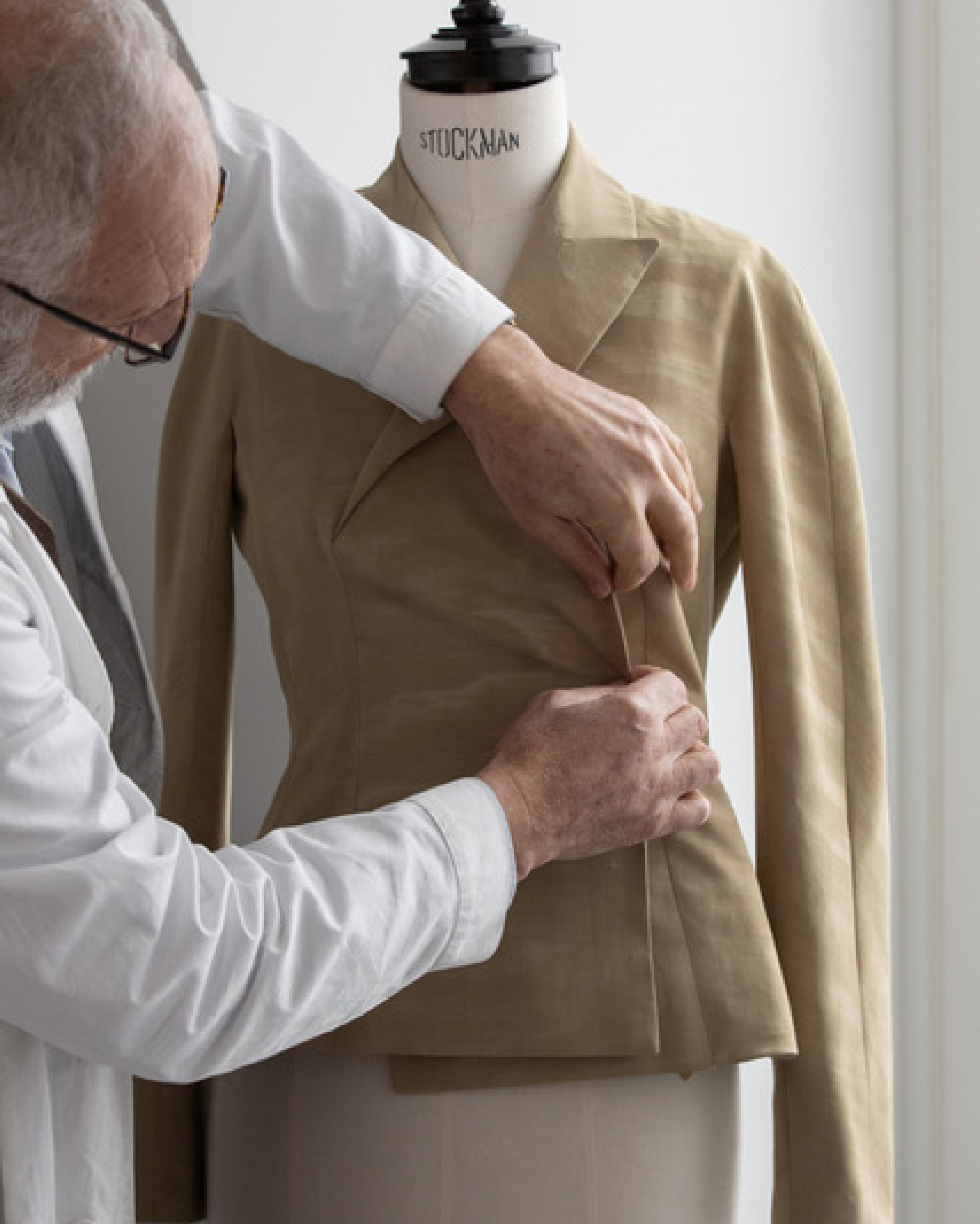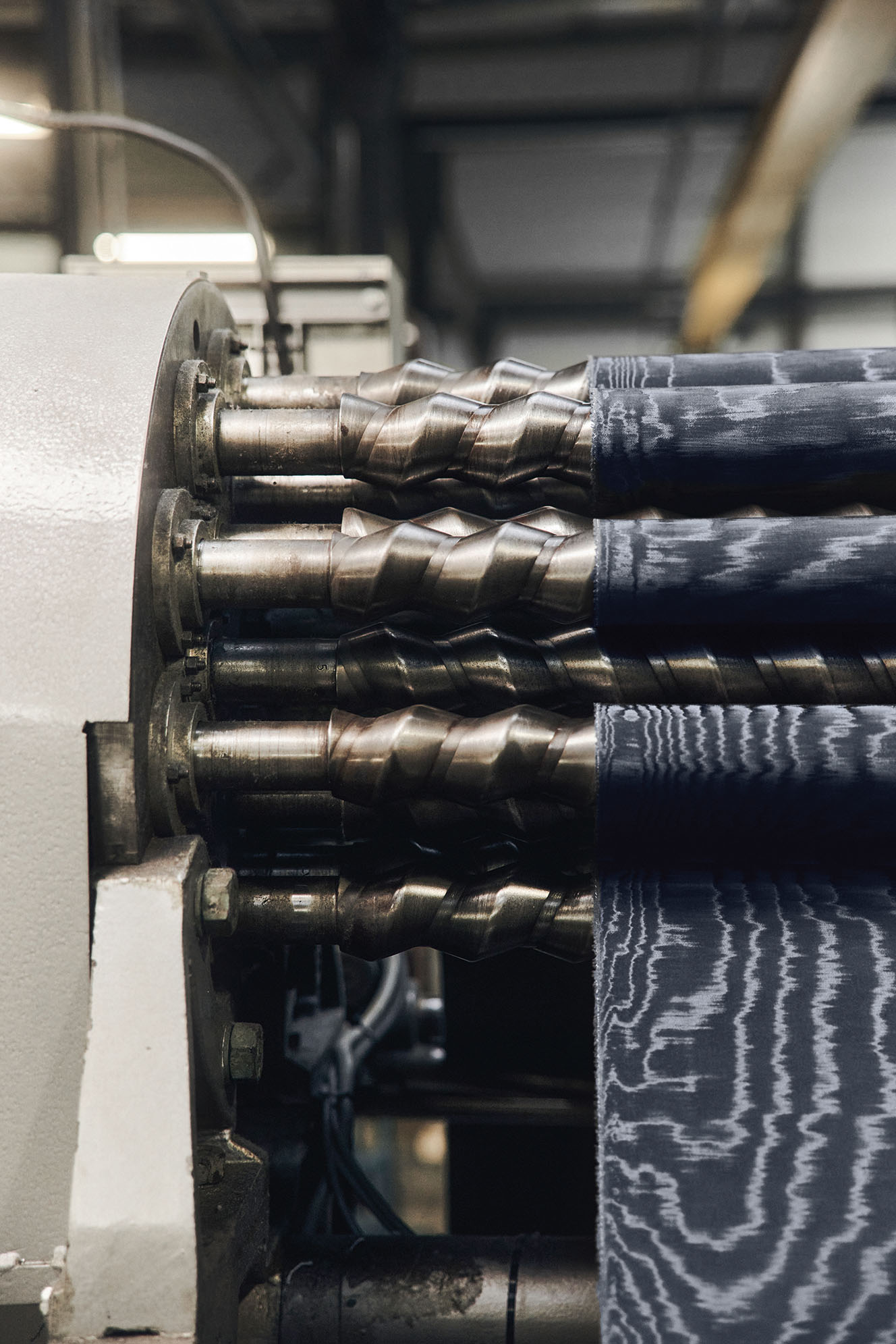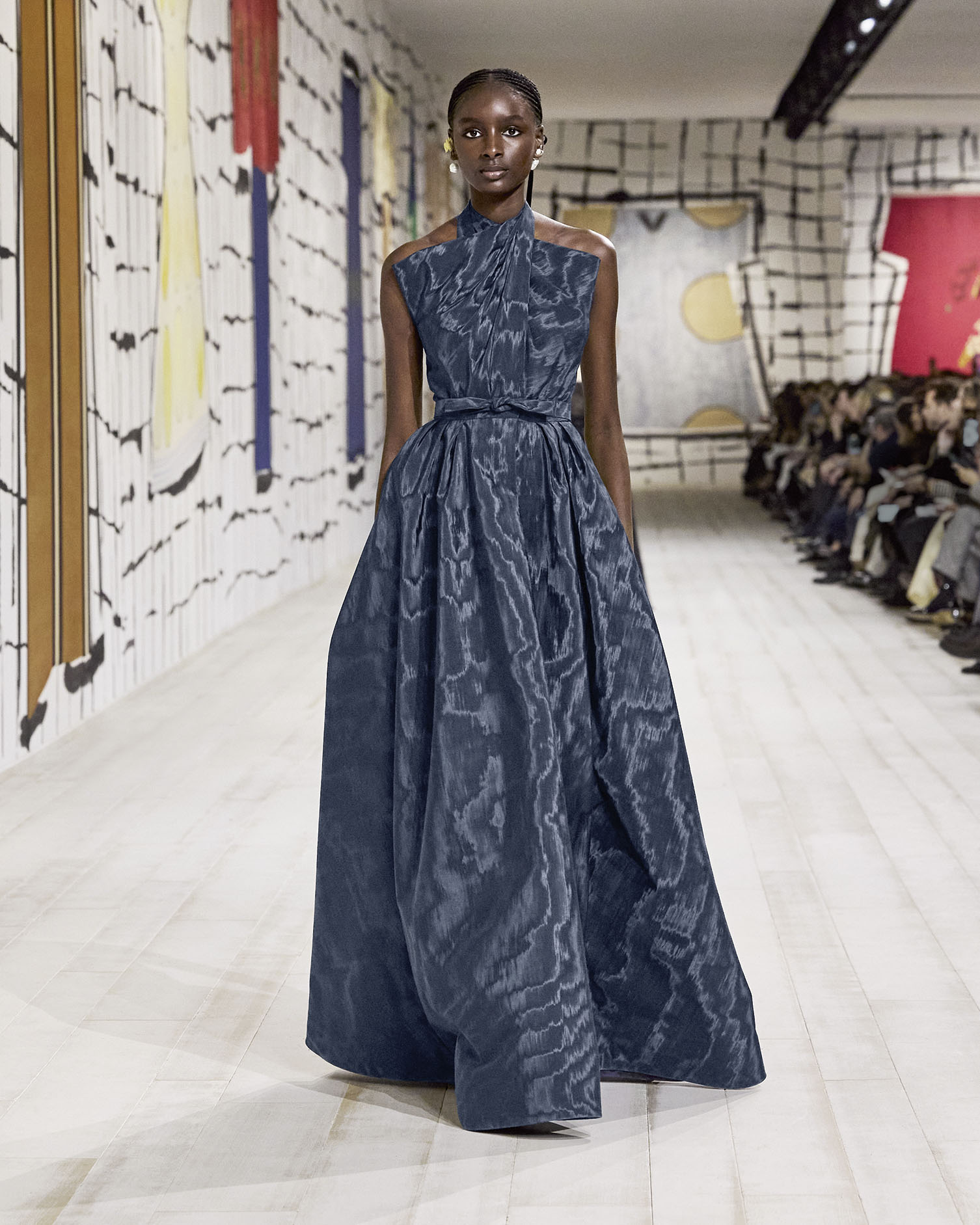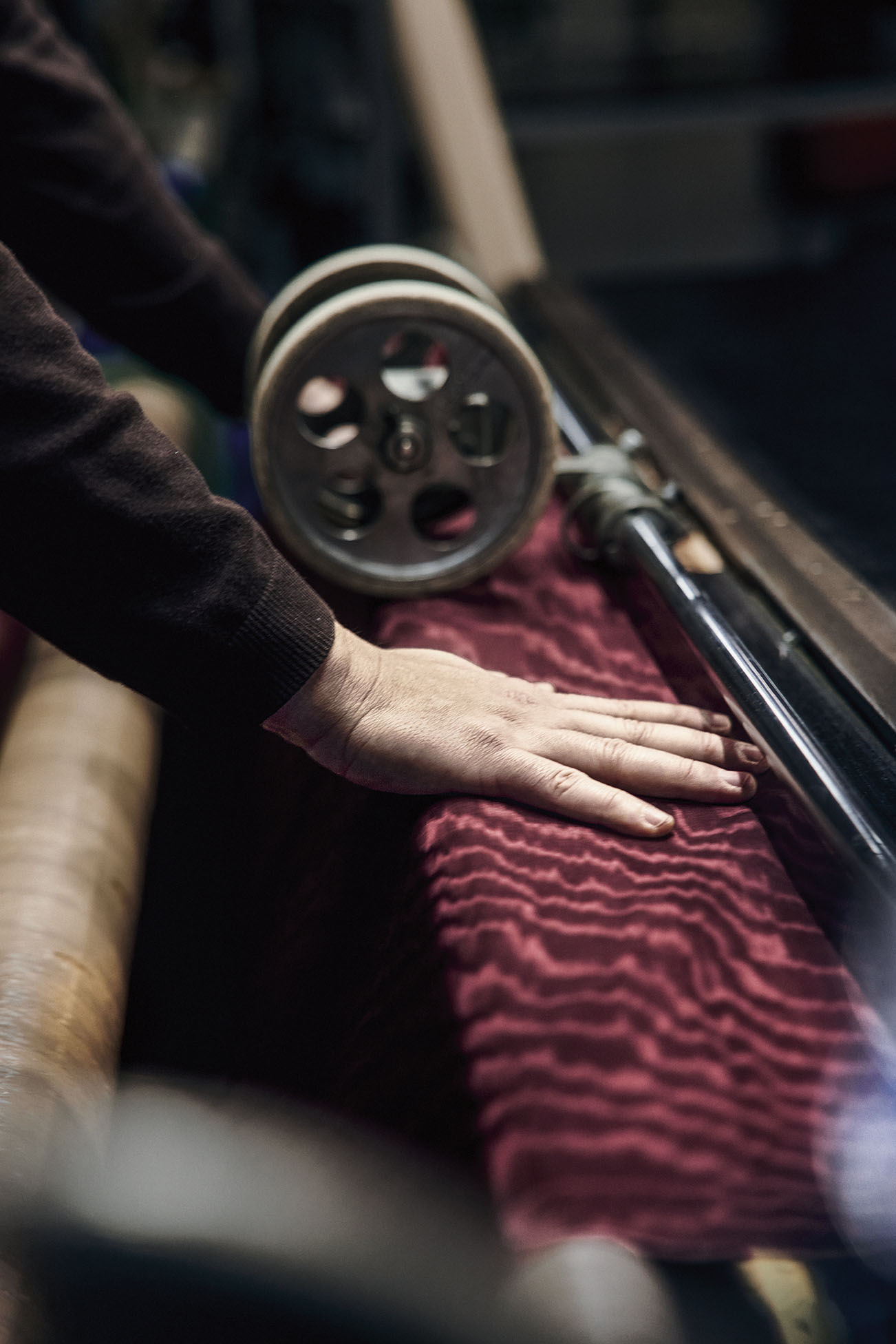Majestic Moiré
Enhancing the silhouettes in the Dior spring-summer 2024 haute couture collection with an extra touch of grace, Maria Grazia Chiuri’s use of moiré reflects her determination to push ever further the limits of excellence. A journey of discovery made possible thanks to the time-honoured savoir-faire at the maison Benaud. By Mathilda Panigada.
“Fabric is the only vehicle for our dreams, but it’s also a promoter of ideas. It can be the starting point for our inspirations. Many a dress is born of it alone.”
Moiré’s changing, undulating effects give it a unique, instantly recognizable identity. Its visual resonance conveys the idea of “the movement of life”, as Christian Dior said in describing the vital spirit that makes a dress beautiful. Historically used in the eighteenth century for court dress and ecclesiastical costumes, it has punctuated various eras without ever losing its noble, almost sacred dimension. For the Dior spring-summer 2024 haute couture collection by Maria Grazia Chiuri, it became the vehicle for exploring the links between textiles and feminine power. Emancipating itself from its roles as mere adornment, protection and ornament, the garment becomes the symbol of an expression of power, be it political, spiritual or religious. |
“It was at Lucien Lelong that, as I became familiar with the craft, I learned the importance of this most essential principle of couture: the use of fabrics. With the same idea and the same fabric, a dress can be a success or a complete failure, depending on whether or not you know how to direct the material’s natural movement, which must always be respected.”
